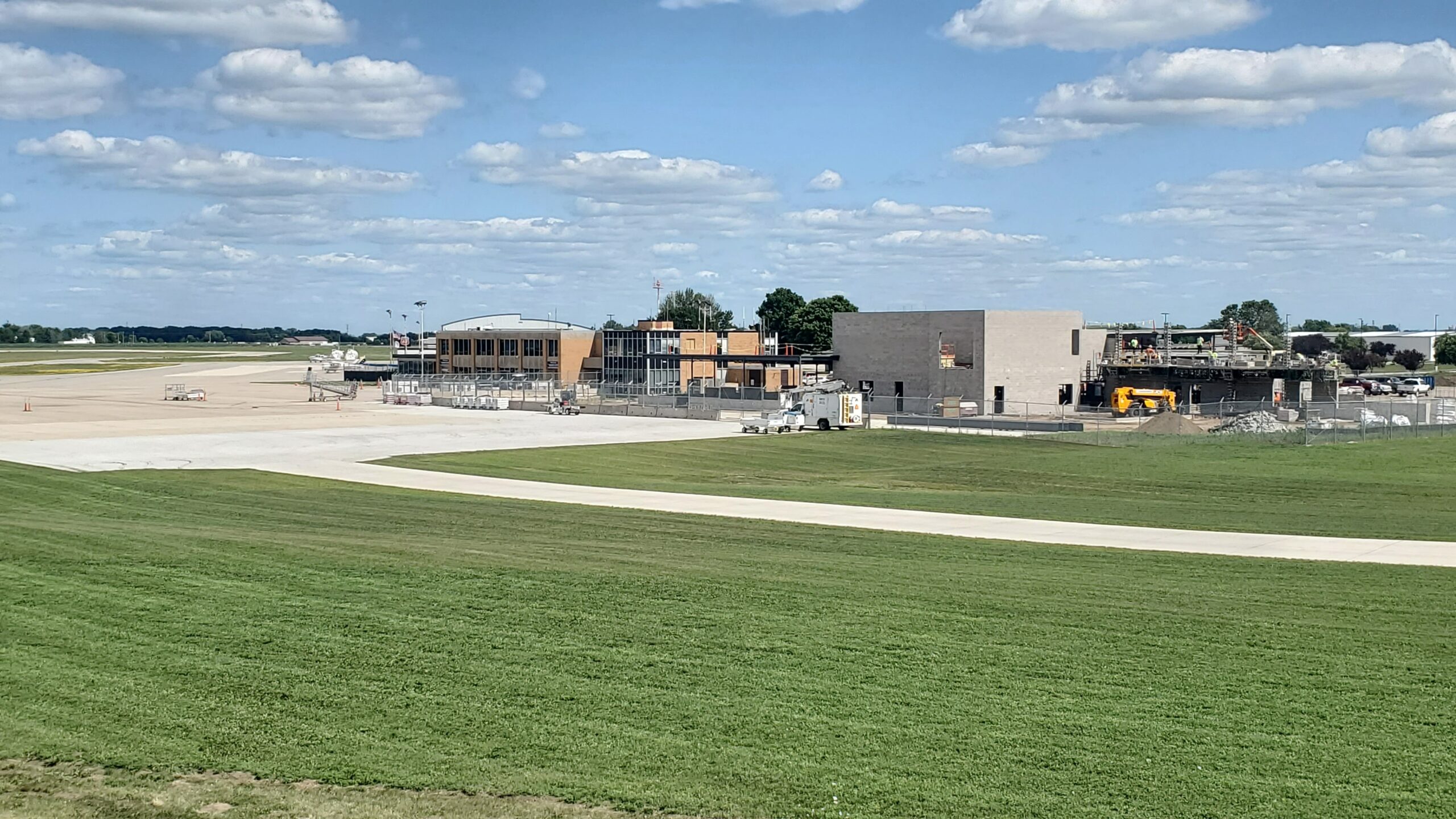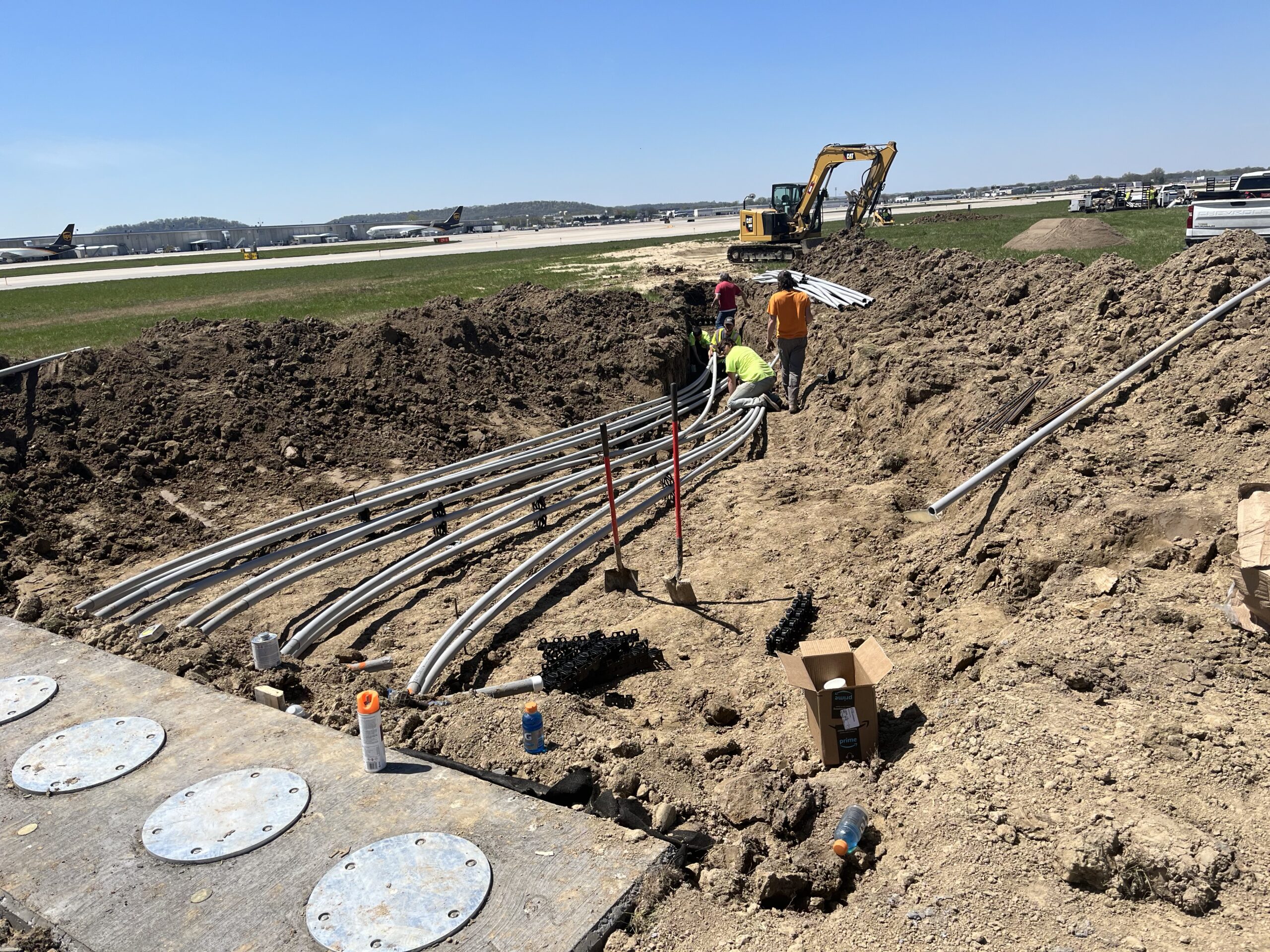
Background
Originally constructed in 1986 and expanded upon 10 years later, the Airport Commission determined in 2010 that significant upgrades to the passenger terminal along with terminal building were once again needed. With the expansion of the terminal came the need to also expand the apron to better accommodate aircraft movements during facility construction as well as after.
Approach
Aircraft movement simulations were performed in order to gain a comprehensive understanding of pavement requirements during terminal construction as well as after. This required knowledge regarding construction means and methods so adequate space was provided on the apron to allow for material fabrication, installation, personnel, and equipment, all while aircraft maneuvered to and from active gates. Modeling software was utilized to develop a detailed marking plan that would ensure clearance from aircraft wing tips to the work area, as well as jet blast protection to field personnel.
Results
Project design and bid document preparation was completed in time to secure a Federal AIP grant covering 90 percent of project costs. Adhering to AIP program requirements, construction was completed in time for the terminal expansion to begin as scheduled.
Markets: Airports
Services: Aviation Services, Construction Services





